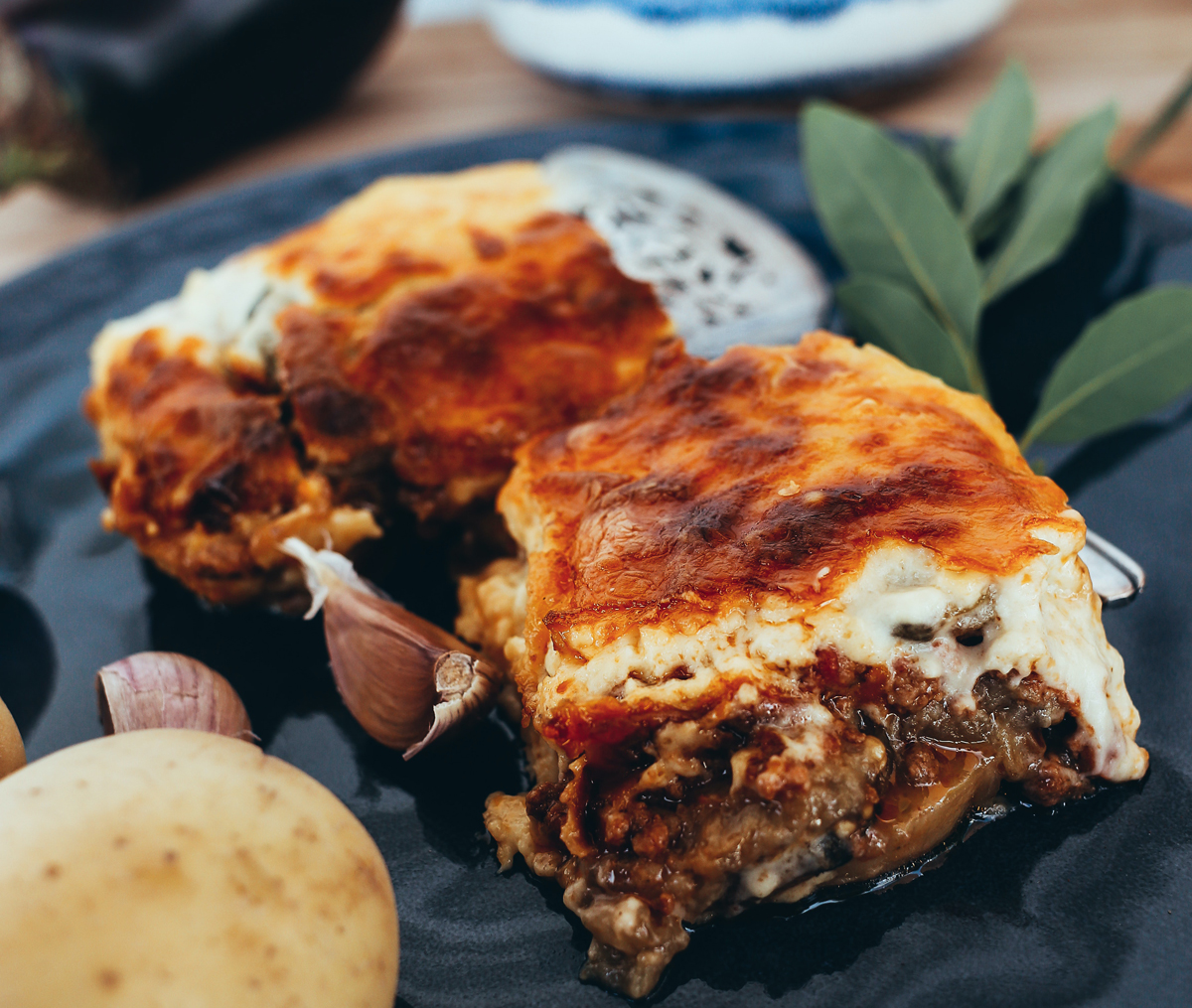Contact Me: howtopbestinfo@gmail.com
Contact Me: howtopbestinfo@gmail.com

To cook a small, single-serve frozen lasagna in an air fryer oven preheated to 350°F (180°C), it usually takes around 45-60 minutes. Keep the lasagna covered with foil until the last 3-5 minutes of cooking and use a meat thermometer to ensure it's fully cooked.
These instructions are also applicable to a convection oven. It's important to note that air fryer cooking times can vary, so monitoring the food's progress is advisable to prevent burning.
For larger frozen lasagnas that won't fit in an air fryer, opt for the oven. Bake the lasagna at 350°F (180°C) for approximately 90 minutes. Cover the lasagna with foil during most of the cooking time and remove it for the last 10-15 minutes to allow for browning. Regularly check the lasagna's internal temperature with a meat thermometer to guarantee thorough cooking.
Remember that individual ovens and air fryers may differ slightly, so adjustments might be necessary. Checking the food earlier than expected is wise to ensure it's cooked to perfection without overcooking.
Lasagna comes in various types, each boasting distinct flavors and ingredients. The classic Italian version combines pasta, ricotta and mozzarella cheeses, and Italian sausage. Beyond this, a plethora of delightful variations exist. Spinach and ricotta lasagna offers a vegetarian twist, often incorporating mushrooms or eggplant for added depth.
Seafood lasagna introduces a maritime flair with oceanic elements. For those with a sweet tooth, dessert lasagnas emerge, crafted from cream cheese, ricotta, and fruit for a sugary treat. This array of styles showcases lasagna's adaptability and versatility, appealing to a broad spectrum of tastes and preferences.
To make lasagna, preheat the oven to 375°F. Gather ingredients: 1 lb ground beef/sausage, 1 diced onion, 1-2 minced garlic cloves, 24 oz tomato sauce, 1 tsp Italian seasoning, 16 oz ricotta, 2 eggs, 1/4 cup chopped parsley, 1/2 tsp salt, 1/2 tsp black pepper, 12 lasagna noodles, 4 cups shredded mozzarella, 1/2 cup grated Parmesan.
Brown meat in a skillet, drain excess fat. Add onions, garlic; cook 5-7 mins. Add tomato sauce, Italian seasoning, simmer 10-15 mins.
Combine ricotta, eggs, parsley, salt, pepper in a bowl. Mix mozzarella, Parmesan in another.
Assemble: Grease 9x13 inch dish. Spread 1/3 meat sauce, top with 4 noodles. Add 1/3 meat sauce, then ricotta mix, followed by cheese mix. Repeat layering once. Top with remaining noodles, meat sauce.
Cover with foil, bake 25 mins. Remove foil, bake additional 25 mins until bubbly. Rest for 15 mins before slicing. Enjoy your homemade lasagna!
Lasagna is a traditional Italian pasta dish consisting of layers of flat, wide noodles intermixed with various fillings like cheese, meats, vegetables, and seafood. This culinary delight is assembled in a layering fashion and united by a sauce such as tomato or Alfredo, then baked until fully cooked. Its versatility allows it to be served hot or cold, making it suitable as an appetizer, main course, or side dish.
The heart of lasagna lies in its layering technique, where thin and broad pasta sheets alternate with flavorful components to create a harmonious blend of tastes and textures. The filling options are diverse, ranging from spinach and cheese to beef, pork, and veggies, catering to a wide range of preferences. Its enduring popularity stems from the comforting and rich experience it offers, as well as its adaptability to various culinary styles and occasions.
Lasagna stands as a testament to Italian cuisine's artistry, encapsulating layers of flavors and textures that combine into a harmonious and hearty dish enjoyed by people around the world.
How to make my lasagna taste better?
Improving the taste of lasagna involves several simple yet effective techniques. Incorporating a generous sprinkle of crumbled bacon, an extra layer of cheese mixture, and the richness of caramelized onions can intensify the flavors. The aromatic essence of fresh herbs such as basil leaves or parsley adds a burst of freshness.
Enhancing the seasoning with an additional teaspoon or two of Italian seasoning and minced garlic while assembling enriches the overall profile. For those seeking a touch of piquancy, a dash of black pepper or red pepper flakes can provide a subtle kick. By judiciously experimenting with these additions, the taste of your lasagna can be elevated, making each bite a more vibrant and delightful experience.
Baking lasagna at 350°F (176°C) provides an optimal cooking environment for a flavorful and well-cooked outcome. This temperature strikes a balance, ensuring thorough cooking of all ingredients while preventing cheese on top from burning or drying out.
Moderate heat preserves flavors and promotes even melting of the cheese, enhancing both taste and texture. This choice also offers flexibility to prepare side dishes alongside the lasagna.
Expect the dish to be ready in around 45 minutes at this temperature, a relatively quick cooking time. It amalgamates the components into a cohesive, delightful meal.
Adhering to these principles when baking lasagna at 350°F (176°C) yields a mouthwatering dish, suited to various fillings, from meats to cheeses and vegetables, showcasing its adaptability and popularity.
Lasagna, being a substantial and savory dish, complements various sides. For a balanced meal, consider pairing it with a vibrant green salad or a medley of roasted vegetables, adding color and freshness to the plate. To further enhance the dining experience, options like garlic bread, crusty Italian bread, or sourdough serve as excellent companions, offering textures that contrast with the lasagna's layers.
For those seeking a more indulgent side, consider serving a creamy risotto, which complements the richness of the lasagna, or opt for comforting mashed potatoes, offering a hearty and satisfying accompaniment. With such a versatile main course, the possibilities for complementary sides are nearly limitless, allowing you to tailor the meal to your preferences and create a well-rounded and delightful dining experience.
To achieve a perfectly cooked lasagna, consider using a simple foil trick to prevent dryness. Begin by covering your lasagna tray with foil about halfway through the baking process. This helps retain moisture and ensures even cooking. As the cooking progresses, remove the foil to allow the top layer to brown and develop a desirable golden hue.
If the top layer still appears pale, you can employ the broiler function to apply direct heat and achieve that appealing golden-brown finish. This technique helps strike a balance between preserving moisture and enhancing the visual appeal of your lasagna."
treheat already cooked frozen lasagna
To reheat a pre-cooked frozen lasagna, follow these steps for optimal results:
Microwave Thawing: Begin by defrosting a single portion of the frozen lasagna in the microwave. Heat it on medium power for about 3-5 minutes until it's partially thawed but not fully heated through.
Oven Reheating: Preheat your oven to 375°F (190°C). Cover the partially thawed lasagna piece with aluminum foil to prevent excessive drying during reheating.
Baking: Place the foil-covered lasagna in the oven and bake until it reaches a safe internal temperature of 165°F (74°C). This ensures that it's fully heated and safe to consume. The baking time will vary depending on the size of the lasagna piece, but it usually takes around 20-30 minutes.
You can prepare lasagna ahead of time and store it in the refrigerator covered with plastic wrap for up to 24 hours. However, keep in mind that refrigerated lasagna might require slightly longer cooking time compared to freshly assembled ones.
How long can lasagna sit out before baking?
When it comes to leaving lasagna out at room temperature, it's essential to prioritize food safety. Perishable foods like lasagna should not be left out for more than 1-2 hours. If you're unable to bake the lasagna within that window, it's recommended to promptly store it in the refrigerator to prevent the growth of harmful bacteria. Following these guidelines ensures the quality and safety of your lasagna.
After cooking lasagna, proper storage is key to maintaining its freshness and flavor. Follow these steps for optimal storage:
Cooling: Allow the cooked lasagna to cool down slightly before storing. This helps prevent condensation, which can lead to sogginess.
Airtight Container: Place leftovers in an airtight container to maintain freshness. You can also wrap the lasagna in plastic wrap or aluminum foil.
Refrigeration: Store the container or wrapped lasagna in the refrigerator. It should remain fresh for up to three days.
Freezing: If you're not planning to consume the lasagna within a few days, consider freezing it. Use a freezer-safe container or wrap it securely in plastic wrap and aluminum foil to prevent freezer burn. It can be frozen for up to two months.
Thawing and Reheating: When you're ready to enjoy the stored lasagna, ensure thorough thawing in the refrigerator. Then, reheat by baking in an oven preheated to 350°F (176°C) for approximately 20 minutes or until heated through.
How do you know when lasagna is ready-can you over cook it?
Absolutely, lasagna can be overcooked, leading to a dry and less appealing texture. While the advice to set the oven at 350 degrees Fahrenheit and cook for around 45 minutes is a starting point, vigilant monitoring is key to avoid this pitfall. Look for visual cues such as bubbling sauce along the edges and a nicely melted cheese topping. However, solely relying on a toothpick can be tricky.
For a more accurate test, insert a toothpick or knife into the center of the lasagna. If it goes in with slight resistance and emerges without excessive sauciness, it's likely done. Be cautious, though; if it slides in too easily, the lasagna may be overcooked and mushy.
Balancing thorough cooking with maintaining the ideal texture is paramount. Consistent checks and using multiple indicators of doneness, including visual cues and gentle resistance when testing with a toothpick, help you achieve a perfectly cooked lasagna that's neither too dry nor overly soft.


Hello! Glad you are here.We share knowledge, let's learn sth together to make our life better!